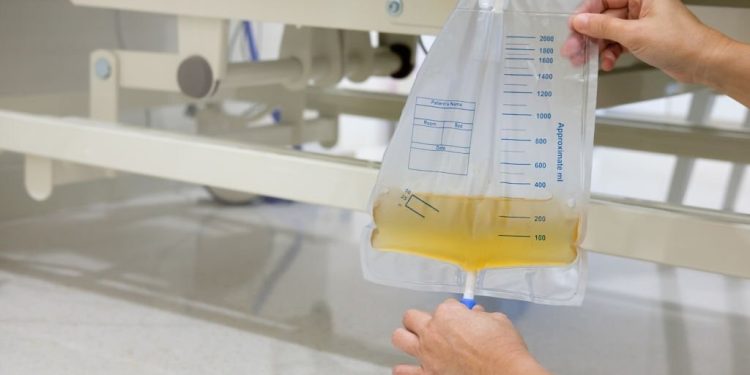What is a Catheter?
A catheter is a tube inserted through your urethra into your bladder to drain urine. It may be used during and after a surgical procedure if a patient has a “neurogenic bladder” – that is, unable to empty the bladder because of a neurological issue such as a stroke or multiple sclerosis, or after bladder or prostate surgery. Nurse at home in Chennai assist patients at home with catheter procedures and follow safe and hygienic standards as in hospitals.
Who Needs Catheters?
When a person cannot urinate, the urine builds up in the bladder, and the problem quickly becomes a serious one as the condition becomes uncomfortable and painful. If the problem continues, the bladder can become overly full, and urine can back up into the kidneys, forcing damage that can lead to serious health issues. When this happens, urinary catheters are used to drain the full-bodied bladder.
A nurse at home may recommend a patient to use a catheter if they have:
- Urinary incontinence (when there is urine leakage or when the patient cannot control urine).
- Urinary retention (when the patient is unable to empty the bladder when they need to).
- Undergone surgery on the prostate or genitals.
- Injury to the nerves of the bladder.
- Medical conditions such as spinal cord injury, multiple sclerosis, dementia, or stroke.
What are the Different Types of Catheters?
Urinary drainage can be done in two ways: through a urinary catheter, where a tube is inserted into the bladder to drain urine and through the suprapubic catheter, where drainage is done through an incision in the abdomen instead of a tube in the urethra.
Urinary catheters are of three types, which are:
-
Indwelling Catheters/ Foley catheters
Indwelling or Foley catheters are inserted into the bladder through the urethra or a tiny hole in the abdomen. It has a tiny water-filled balloon at the end of the catheter. Which prevents the tube from sliding out of the body.
-
External Catheters
External catheters are used by patients who do not have a urinary problem but face dementia, stroke, or other related problems. It is condom-like equipment that covers the head of the penis. As the name suggests, they are not inserted but placed outside the body. These catheters have a lower risk than indwelling catheters, but they need to be changed daily.
-
Intermittent Catheters
Intermittent catheters are used post-surgery when a patient’s bladder is not performing well. These are short-term catheters and are removed once the bladder starts performing well.
Nurse’s Responsibilities in Catheter Care
- Nurses need to wash their hands before and after tending to a patient with an indwelling catheter.
- The perineal area should be cleaned thoroughly, especially around the meatus, at least twice a day and after every bowel movement. This helps prevent infections from entering the bladder.
- They need to use soaps or detergents and water to clean and rinse the perineal area.
- They should make sure the patient maintains a generous fluid intake. This helps prevent infections and flushes the catheter naturally by increasing urinary output.
- Need to maintain a record of the patient’s intake and output and also the volume and character of urine.
- They should teach the patient the importance of personal hygiene, thorough cleaning after having bowel movements and washing of hands frequently.
- They need to report any signs of infection promptly to the concerned physicians. These infections may include burning sensations and irritation at the meatus, a strong odor to the urine, cloudy urine, and a high temperature and chills.
- Catheters are usually changed between 5 days to 2 weeks, depending on the patient. The less often a catheter is changed, the less likely an infection will develop. So, nurses need to plan when to change the indwelling catheters.
Conclusion:
In the olden days, red rubber tubes were used, then sterilized, and re-used, which often led to the spread of disease and a high risk of infection. Thanks to David S. Sheridan for saving thousands of lives by inventing the modern disposable catheter in the 1940s.
Catheterization of the urinary tract should only be done when there is a specific and adequate clinical indication, as it carries a risk of infection. The main aim of a nurse at home in Chennai should be to ensure the insertion and care of the urinary catheter are carried out in a safe manner that minimizes trauma and infection risks.














